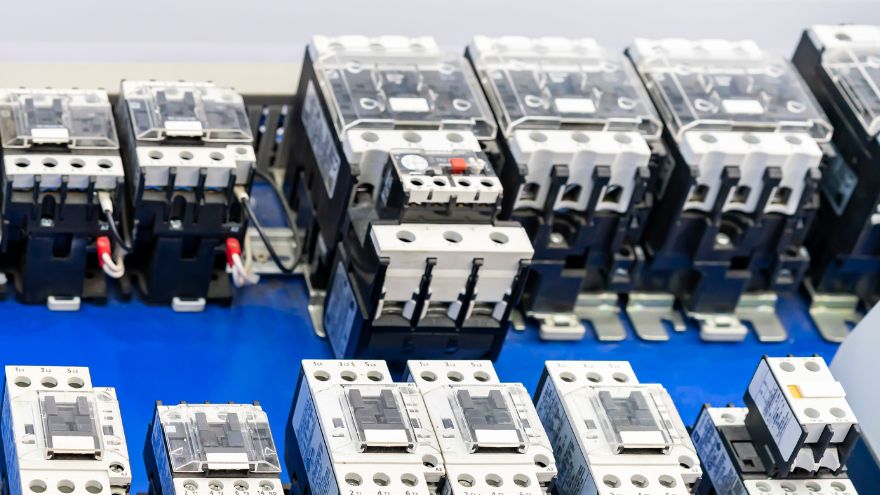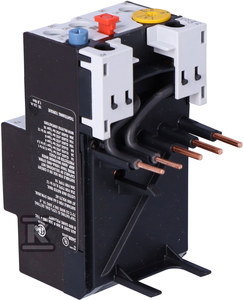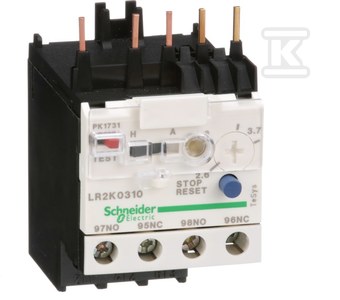The thermal relay (also known as overload relay) is a commonly used protection device in electrical installations. Protects the electric motor from damage due to stalling, overload, long starts or phase loss. In addition to providing protection for the motor, the overload relay provides effective control of the readings. When will thermal protection trip and which thermal relay should I choose?

Check out thermal relays at the Onninen wholesaler
What is an overload relay?
 The overload relay is one of the key protections for electrical systems. Provides protection and control of engines, transformers, industrial furnaces and other electrical equipment. It protects the motor against overheating, overload and failures caused by excessive current consumption. It is necessary in extreme working conditions. Additionally, an overload relay enables precise control of the electrical load. An increase in current above the permissible, safe level triggers the overload relay, which immediately turns off the power circuit, preventing damage to the contactor and the entire device. Installing overload relays is not a major challenge for an electrician. Most of them are connected directly to the operating circuit and contactors.
The overload relay is one of the key protections for electrical systems. Provides protection and control of engines, transformers, industrial furnaces and other electrical equipment. It protects the motor against overheating, overload and failures caused by excessive current consumption. It is necessary in extreme working conditions. Additionally, an overload relay enables precise control of the electrical load. An increase in current above the permissible, safe level triggers the overload relay, which immediately turns off the power circuit, preventing damage to the contactor and the entire device. Installing overload relays is not a major challenge for an electrician. Most of them are connected directly to the operating circuit and contactors.
How does a thermal relay work?
When the electric motor winding is heated, the thermal relay changes its form and condition, using the properties of bimetal (bimetal plates). The motor current flows through the resistors. When a certain temperature value is exceeded, e.g. due to engine failure, the resistors cause the bimetal to heat up. Reaching the activation temperature leads to additional curvature of the plates, which turn off the thermal switch (thermal switch). At the critical moment, the working circuit is completely broken, so nothing dangerous will happen to the machine or staff.
How to choose a thermal relay?
A properly matched thermal relay affects the safety and efficiency of work as well as the optimal life of the devices. It protects not only the machines, but also the people operating them. It allows you to minimize the risk of downtime due to device failure. Therefore, it is worth considering the purchase of a relay carefully, and it is best to consult it with an experienced electrician or another specialist familiar with the subject.
When choosing a thermal relay, you should pay attention to such parameters as:
- trigger class,
- current setting range,
- assembly method,
- type of connection of main contacts,
- number and type of auxiliary contacts,
- maximum rated operating voltage (Ue),
additional functions.
In order to protect electric motors against overload, relays in trigger classes 10A and 10 (light and traditional engine starting) are most often used. The rated current of the relay is matched to the rated motor current - this value must be within the current setting range of the thermal relay.
Relays in the Onninen wholesaler
 At the Onninen electrical wholesaler , you will find overload relays with various parameters and functions, which allows you to precisely select a protection device for the project you are implementing. We offer reliable and safe thermal relays from brands such as Eaton and Schneider Electric Polska. They enable effective, long-term protection of devices and precise control of engine operation and entire electrical processes. Most thermal relays have a wide range of rated current adjustments and are designed for direct mounting.
At the Onninen electrical wholesaler , you will find overload relays with various parameters and functions, which allows you to precisely select a protection device for the project you are implementing. We offer reliable and safe thermal relays from brands such as Eaton and Schneider Electric Polska. They enable effective, long-term protection of devices and precise control of engine operation and entire electrical processes. Most thermal relays have a wide range of rated current adjustments and are designed for direct mounting.
